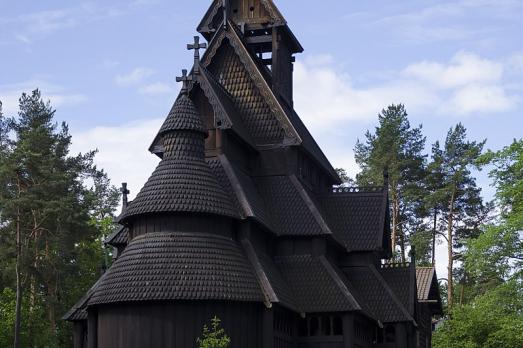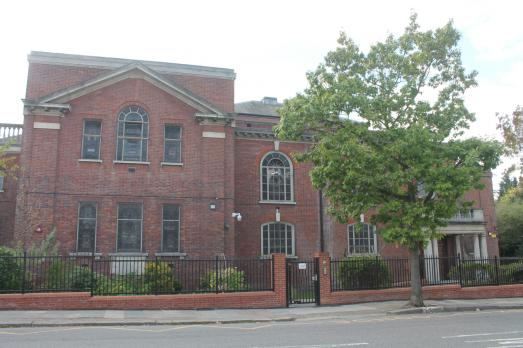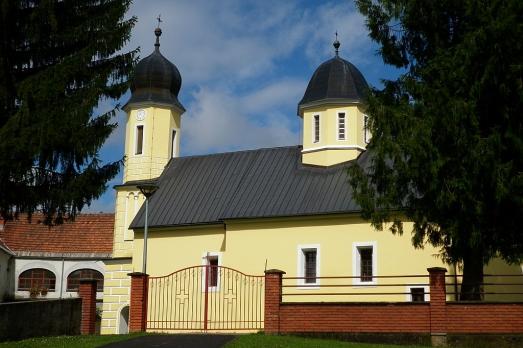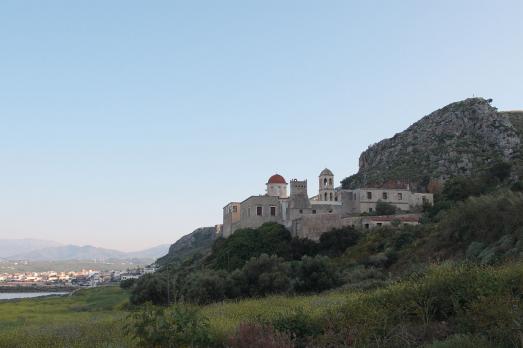
Goede Herder Church
Bedum, NL
The Good Shepherd Church was designed in 1937-38 by architect Egbert Reitsma. It is a fine example of the expressionist Amsterdam School.
Here you can search for a building to visit. You can use the map find destinations, or you can use the filters to search for a building based upon what different criteria.

Bedum, NL
The Good Shepherd Church was designed in 1937-38 by architect Egbert Reitsma. It is a fine example of the expressionist Amsterdam School.

Goingaryp, NL
The church in Goingarijp is one of the churches with its own clock chair. That makes the church special - even if the clock chair was often a choice of poverty. The stained glass windows are a special attraction for the many (water sports) tourists who visit this church.

Gol, NO
The Gol church, designed by architect Henrik Nissen, was completed in 1882, after the former Stave church in the city had to give way and was moved to Bygdøy kongsgard, in the area that is now the Oslo Folk Museum. The former Society for the Preservation of Ancient Norwegian Monuments, which was responsible for the moving of the stave church operation, donated the old building to King Oscar II.

Hahaugvegen, NO
The Gol Stave Church dates back to around 1200. Since 1884 the church has been owned by the ruling monarch in Norway since Oscar II (1872 - 1907) moved it to its open-air museum. It has four copies, two in Norway and two in the United States. The church is now a part of the Norwegian Museum of Cultural History.

Lviv, UA
The Goldene Rose Synagogue (Taz, Turei-Zahav, Nachmanowicz) in Lviv is an Ashkenazi synagogue founded in 1582 but destroyed in 1941-43. Over the centuries, this synagogue acquired different styles such as Gothic Survival or Mannerism. It is now abandoned.

London, GB
The Golders Green Synagogue in London was built in 1921-1922 by architects Digby Lewis Solomon and Joseph Messers. This brick building in the Neo-Georgean style still serves as a synagogue.

, MK
On this relatively small island of Lake Megali Prespa stretching into northern Macedonia, Albania and Greece, a large number of historical and cultural monuments are concentrated. The Golem Grad island has been inhabited continuously for 2000 years and the monastic life was thriving there from the 10th century until the 14th century. Thus, there are no less than seven remains of churches. Among them, the Church of St Peter of Golem Grad, the only fully preserved church. Built around 1360, its reconstruction was last carried out in 1934. The church has many frescoes to admire inside.

Musulini, HR
Gomirje Monastery is an Orthodox Monastery founded by Serbian monks. It was probably erected in 1600 around a primitive wooden church. The current church of Roždenije was in 1719 and is dedicated to St John the Baptist.

Kolymvari, GR
The monastery of Lady Gania was founded in the 9th century but the current building dates from the 17th century. Since then, the monastery was destroyed twice by the Turks (1652 and 1867) and used as a prison by the Germans during the Second World War.
Groningen, NL
Established as a Reformed church in Groningen-Noord. In use in 1956. Rectangular hall church with low, partly openwork tower. Characteristic work in the late oeuvre of the important architect Egbert Reitsma (1892-1976), also an important example of church building from the reconstruction period in Groningen. On the corner, above the main entrance, there is a sculpture depicting The Good Shepherd. Such works of art are often found in Reitsma's post-war churches (compare for example the Stadsparkkerk in Groningen). Also temporarily in use as a Roman Catholic Church (for the neighbouring parish of H. Hart, which sold its own church) until 1997.

new
The Chassidic Route is a cultural and historical trail tracing the rich legacy of Jewish communities in southeastern Poland and western Ukraine. This region was central to the rise of Chassidism in the 18th century. Here, we highlight 10 remarkable synagogues you’ll discover along this route.

he cradle of the Industrial Revolution in Germany, Chemnitz, is well-known for its industrial heritage landscape, but the city is also home to remarkable examples of religious architecture from different historical periods. Join us as we explore the key landmarks of this European Capital of Culture 2025.

The twin towns of Nova Gorica (Slovenia) and Gorizia (Italy), lying on the border between the two countries, have a rich religious heritage, steeped in centuries of tradition. If you are looking for ideas for your visit, take note of these 10 religious sites that you should not miss.